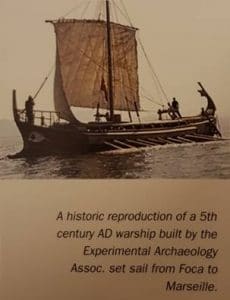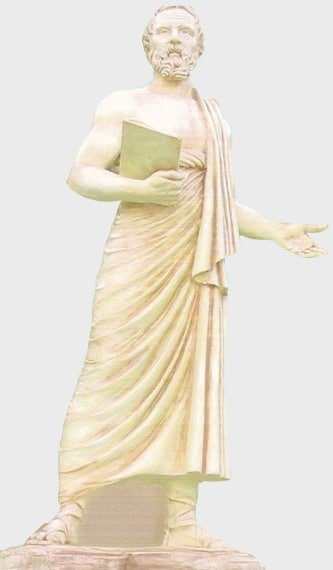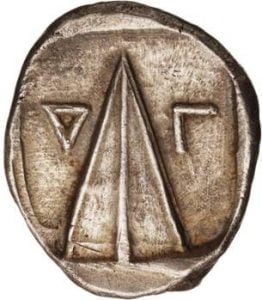“Everything flows and never stops”
Heraclites
Cevat Şakir Kabaagaçlı, known by his penname, “the Fisherman of Halicarnassus”, writes about the “Sea Islands” as follows: The Aegean coast is a place where bays and headlands embrace the sea… Noble peaks and great headlands fall into the sea, rise out to become islands. These headlands that dip in and out of the sea form a series of islands, just like a line of pearls.”
 The Aegean is the country of sun and abundance. The rivers are the great source of life. They fill the valleys with rich alluvium while passing through the pine covered mountain ranges before meeting the sea. These glorious coasts comprise a cradle of civilisation praised in Sumerian legend as the “garden of paradise at the seaside.”
The Aegean is the country of sun and abundance. The rivers are the great source of life. They fill the valleys with rich alluvium while passing through the pine covered mountain ranges before meeting the sea. These glorious coasts comprise a cradle of civilisation praised in Sumerian legend as the “garden of paradise at the seaside.”For thousands of years, many people in search of land in which to settle, fell under the spell of this bountiful haven, and founded magnificent cities of white marble in the bays that held a strand of islands so close together one could skip from one to the other. Here, master seaman and shipbuilders of renown were nurtured.
The historical trade routes by land, starting in Asia and reaching the seaports of Western Anatolia and then by ships that travelled from one port to the other in the Mediterranean, brought to these cities the light of science and art and prosperity. The reflection of the brilliant civilisation created by the Aegean peoples, who were called ‘”people in the heart of the sea” by the Egyptians, illuminated the west. It was for this reason that the Romans said ‘’Ex oriente lux’’ (Light comes from the East). The common characteristic of western Anatolian coastal cities of antiquity is that they are built on peninsulas that reach into secure bays with harbours on two sides capable of protecting the ships from winds blowing from any direction. Of course a steep hill on which to build İn acropolis a fortress to defend the city, as well as a river for agriculture was also needed. As if to confirm the saying of Heraclites of Ephesus, “Everything flows and never stops,” the centuries that went by changed the natural environment too. The waters drowned the life blood of the cities which they had created and developed in the first place.
The world's first historian Herodotos recounts the ancient past like a story in his masterpiece "Histories".

As with the Patara example, some cities were buried under the sand dunes scattered by the wind, brought in and piled up by the sea and rivers. In many other ancient cities like Ephesus, Miletos and Caunos, the silt brought by the rivers filled in the ports and turned them into swamps denying entry to ships. People insisting on living in these cities that remained miles away from the coast, fell victim to the malaria carried by mosquitoes, rising like a cloud from still waters at night.
In his famous work entitled “History Herodotus of Halicarnassus (Bodrum), the world’s greatest traveller, relates the following while telling a historic tale: “I will talk of many people, small and large cities… This is because the elder became younger and the younger became elder. What did you expect, name and reputation vanishes too with time.
This is Caunos’s story too. The growth from a small town to a major harbour city.. .Then the decline began… One of the ports filled up with silt and the other, overtaken by the reeds of the delta, turned into a lake. Consequently, the city of Caunos was abandoned by its people and even the place itself was forgotten When Hoskyn,an English archaeologist found a law tablet mentioning the Council of Caunos, the people and its elders whilst visiting the ruins in 1842, he brought Caunos out from its dusty corner and into the light of day. The research begun by Turkish archaeologists in 1966 revealed that the settlement started out as a city state founded by natives of Anatolia and was called “Kbid” in the native language. A monogram consisting of the letters “V” (K) and “T” (B) found on coins minted before the city was attached to the satrapy of Caria, represented the first two letters of the name of this city (Öğün, Işık -2001).
ports filled up with silt and the other, overtaken by the reeds of the delta, turned into a lake. Consequently, the city of Caunos was abandoned by its people and even the place itself was forgotten When Hoskyn,an English archaeologist found a law tablet mentioning the Council of Caunos, the people and its elders whilst visiting the ruins in 1842, he brought Caunos out from its dusty corner and into the light of day. The research begun by Turkish archaeologists in 1966 revealed that the settlement started out as a city state founded by natives of Anatolia and was called “Kbid” in the native language. A monogram consisting of the letters “V” (K) and “T” (B) found on coins minted before the city was attached to the satrapy of Caria, represented the first two letters of the name of this city (Öğün, Işık -2001).
 ports filled up with silt and the other, overtaken by the reeds of the delta, turned into a lake. Consequently, the city of Caunos was abandoned by its people and even the place itself was forgotten When Hoskyn,an English archaeologist found a law tablet mentioning the Council of Caunos, the people and its elders whilst visiting the ruins in 1842, he brought Caunos out from its dusty corner and into the light of day. The research begun by Turkish archaeologists in 1966 revealed that the settlement started out as a city state founded by natives of Anatolia and was called “Kbid” in the native language. A monogram consisting of the letters “V” (K) and “T” (B) found on coins minted before the city was attached to the satrapy of Caria, represented the first two letters of the name of this city (Öğün, Işık -2001).
ports filled up with silt and the other, overtaken by the reeds of the delta, turned into a lake. Consequently, the city of Caunos was abandoned by its people and even the place itself was forgotten When Hoskyn,an English archaeologist found a law tablet mentioning the Council of Caunos, the people and its elders whilst visiting the ruins in 1842, he brought Caunos out from its dusty corner and into the light of day. The research begun by Turkish archaeologists in 1966 revealed that the settlement started out as a city state founded by natives of Anatolia and was called “Kbid” in the native language. A monogram consisting of the letters “V” (K) and “T” (B) found on coins minted before the city was attached to the satrapy of Caria, represented the first two letters of the name of this city (Öğün, Işık -2001).
Source: Koycegiz – Dalyan A Journey Through History Within The Labyrinth of Nature, (pages: 110-113), Altan Türe, 2011, Faya Kültürel Yayınları



Comments